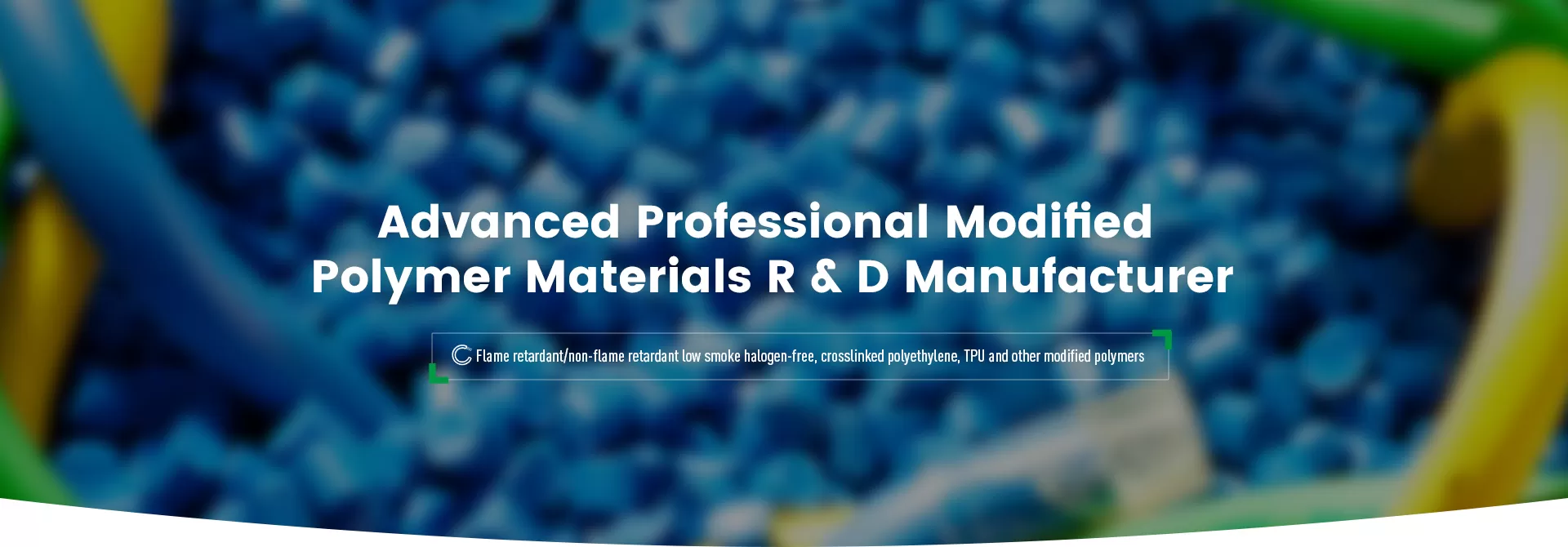
With the rapid development of 5G networks around the world, the wire and cable industry is undergoing a comprehensive upgrade of safety and environmental standards. The wiring of 5G base stations, data centers, and communication fiber optic networks has put forward higher requirements for cable materials, cable construction, and fire resistance.
In traditional cables, halogen materials are often used in sheaths and insulation layers to improve flame retardancy. However, these materials release toxic fumes and corrosive gases in the event of a fire, which not only endangers the safety of people (people and equipment), but may also damage 5G core equipment. Therefore, Low Smoke Zero Halogen (LSZH) cables are becoming the mainstream choice for 5G communication infrastructure.
LSZH cable is an environmentally friendly cable produced using Angreen's LSZH material.
Its main features include:
Halogen-Free: The sheath and insulation layer do not contain harmful halogen elements such as chlorine (Cl), bromine (Br), fluorine (F), and iodine (I).
Minimal Smoke: When exposed to fire, no dense black smoke will be produced, which improves escape visibility.
Non-Toxic And Low Corrosive Gases: Even during the combustion process, no harmful gases will be released, reducing damage to equipment and personnel.
High Flame Retardant Performance: It can effectively prevent the spread of flames in fires and reduce the risk of secondary disasters.
Due to these advantages, LSZH cables are widely used in 5G data centers, underground communication pipelines, high-rise buildings, rail transit, power facilities and other fields.
5G network infrastructure involves a lot of cable designing and complex communication wiring. Including:
·5G base station internal power lines, RF cables, fiber optic cables
·Urban underground communication lines
·High-density wiring in data centers
·Communication networks inside buildings
Although traditional PVC (Polyvinyl Chloride) cables are cheap, they will release a lot of toxic fumes in the event of a fire, seriously affecting signal transmission equipment and endangering people and equipment.
In contrast, low smoke zero halogen cables have the following key advantages in 5G infrastructure construction:
(1) Ensure the Safety of 5G Equipment and Avoid Corrosive Damage
Ordinary cables will release corrosive gases when burning, causing serious damage to 5G core equipment.
LSZH cables use a halogen-free formula and will not release corrosive substances even in a fire environment, ensuring the safety of base station and data center equipment.
(2) Reduce Fire Risks and Improve Building Safety
Fiber optic and power cables in 5G networks are often concentrated in small, poorly ventilated areas, such as underground pipelines, data centers, base station equipment rooms, etc.
If a fire occurs, the minimal smoke emission characteristics of LSZH cables can effectively reduce toxic fumes and increase the chance of escape.
(3) Meet Global Environmental Standards and Reduce Environmental Pollution
European RoHS Directive, REACH Regulation, US NEC (National Electrical Code) and other standards have begun to mandate the use of low smoke zero halogen (LSZH) cables.
The use of LSZH cables in 5G infrastructure is in line with the global sustainable development trend and reduces environmental pollution.
4. Application Scenarios of LSZH Cables in 5G Infrastructure
(1) Internal Wiring of 5G Base Stations
The RF cables, power cables, and network cables of 5G base stations require high durability and high flame retardancy. LSZH cables are an ideal choice.
The use of heat shrink technology improves the reliability of cables in extreme environments.
(2) Construction of 5G Optical Fiber Networks
The underground wiring of urban 5G optical fiber networks needs to prevent corrosive gases from damaging equipment. LSZH optical cables have better environmental adaptability.
(3) Data Center Room
Data centers have dense communication cables. Ordinary cables will release dense black smoke in a fire, affecting fire evacuation.
The low smoke characteristics (smoke zero halogen) of LSZH cables can effectively reduce the impact of fire.
5. Future Trends: The Combined Development of 5G and LSZH Technology
With the high-density deployment of 5G base stations and the expansion of data centers, the future development trends of the cable industry include:
(1) Research and Development of Higher-Standard LSZH Cables
LSZH materials with stronger weather resistance are suitable for outdoor extreme environments such as high temperature, humidity, and severe cold.
LSZH cables with higher flame retardation levels (flame retardation) improve fire resistance.
(2) Expansion of LSZH Cable Applications In Smart Cities
The future 5G+ smart city construction will promote the large-scale application of LSZH cables, covering multiple fields such as transportation, electricity, and the Internet of Things.
(3) Further Strengthening of Regulatory Standards
It is expected that in the next few years, major global communication regulations and building standards will force 5G infrastructure to fully adopt LSZH cables to ensure safety and environmental protection.
6. Conclusion: LSZH Cables Are The Inevitable Choice for 5G Infrastructure
The advent of the 5G era has made low-smoke zero-halogen (LSZH) cables one of the key technologies for 5G network construction. Whether in 5G base stations, data centers, or urban fiber optic networks, LSZH cables are replacing traditional PVC cables with high safety, low smoke emissions, and environmental compliance, becoming the mainstream trend in the future communications industry.
In the face of the rapid development of global 5G networks, companies should give priority to LSZH cables that meet international safety and environmental standards in cable designing to ensure the stability and security of 5G networks.